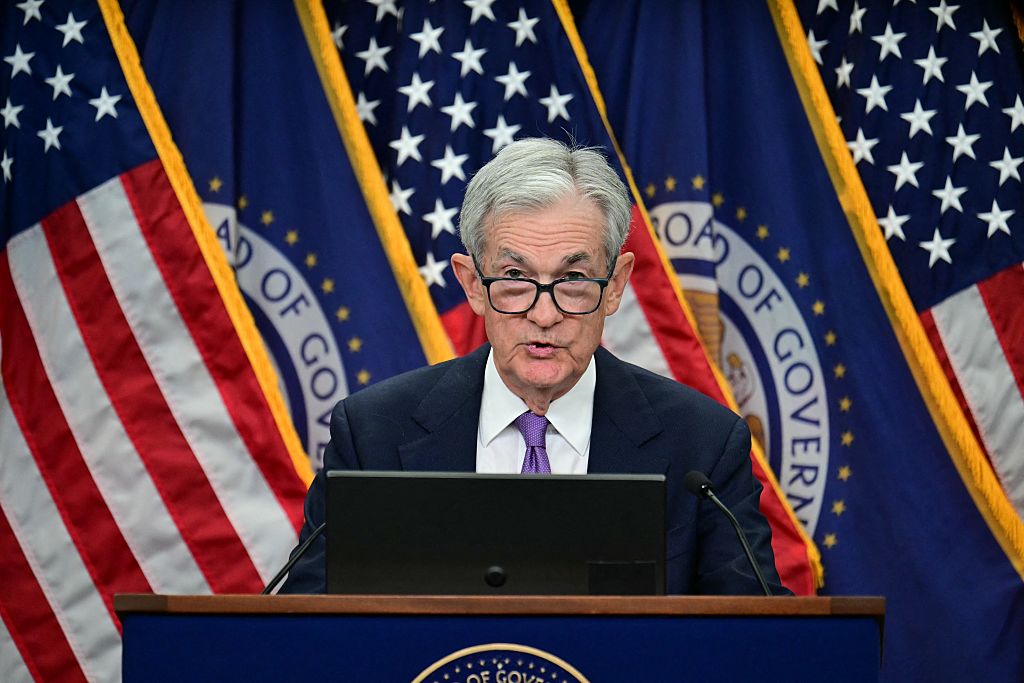January CPI Report: What the Experts Are Saying About Inflation
Although inflation continued to ease last month, the CPI report still ensures more rate hikes from the Federal Reserve.


The January CPI report released Tuesday revealed that inflation continued to cool in January, albeit by not quite as much as economists had forecast.
The CPI report, or Consumer Price Index, for January increased 0.5% on a month-to-month basis after rising 0.1% in December, the Bureau of Labor Statistics said. Economists surveyed by Dow Jones were looking for the monthly inflation rate to rise 0.4% last month.
On an annual basis, CPI increased 6.4% in January, down from a rise of 6.5% the previous month. Economists were looking for the annual inflation rate to slow to 6.2% last month.
From just $107.88 $24.99 for Kiplinger Personal Finance
Become a smarter, better informed investor. Subscribe from just $107.88 $24.99, plus get up to 4 Special Issues

Sign up for Kiplinger’s Free Newsletters
Profit and prosper with the best of expert advice on investing, taxes, retirement, personal finance and more - straight to your e-mail.
Profit and prosper with the best of expert advice - straight to your e-mail.
Core CPI, which excludes volatile food and energy prices, increased 0.4% on a monthly basis, up from 0.3% price growth in December.
The bottom line, experts say, is that inflation is not going away quietly. Rents were the primary culprit for inflation coming in ahead of forecast last month, they note. Meanwhile, consumer prices increased 0.5% in January, the biggest monthly move since October.
Markets gave the CPI report tepid applause, with the major benchmarks reacting to the news with gains. Although the data doesn't support a more dovish rate policy, neither should it cause the Fed to turn more hawkish than it already is on interest rates.
With the January CPI report now a matter of record, we turned to economists, strategists, investment officers and other pros for their thoughts on what the inflation data means for markets, macroeconomics and monetary policy going forward. Please see a selection of their commentary, sometimes edited for brevity or clarity, below.
CPI Report: The Experts Weigh In

"This inflation print served as a reminder to investors that the path to lower inflation is not as clear cut as previously thought and it is too early for the Fed to declare victory on inflation. While the economy has experienced meaningful cooling in prices recently, the tight labor market and continued growth in wages also remind us that many pockets of the economy are still strong. Areas within the economy that saw prices slow down in previous months were contributors to keeping inflation up in January. Used-vehicle, apparel, and service prices contributed to elevated core inflation and more expensive gas prices kept headline CPI higher." – Gargi Chaudhuri, head of iShares Investment Strategy, Americas
"The January consumer price index release showed that the Federal Reserve still has work to do to tame inflation. The 0.5% rise in headline prices and 0.4% increase in core prices during the month were in line with expectations, however they highlight the still high levels of inflationary pressure across the economy to start the year. This report, combined with the much stronger than anticipated January employment report, indicates that the Fed may have to hike rates this year by more than what markets anticipate. Following the CPI release, Treasury futures markets were pricing in two additional 25 basis point [0.25%] rate hikes this year; however, as we saw last year, market expectations can change swiftly, especially if the Fed continues to signal further rate hikes ahead." – Sam Millette, fixed income strategist for Commonwealth Financial Network
"The adjustments to the CPI weights meant that inflation was revised upwards during last year and thus the year-over-year increase was 6.4% rather than lower as markets were expecting. Still, the year-over-year rate was lower in January, 6.4%, than what it was in December, 6.5%. However, the slowdown in year-over-year inflation decelerated in January and that will probably support our view of the Federal Reserve's (Fed) argument that it is not done raising rates." – Eugenio Alemán, chief economist at Raymond James
"The January CPI report adds to doubts that inflation is truly on a path back to the Federal Reserve's target. In conjunction with the blowout jobs report in January, this further augments recent assertions from the FOMC for sustained tightening over the coming spring, increasing the potential of an acceleration in the size of individual hikes as well as the terminal rate. Credit unions should anticipate the fed funds rate clearing 5%, with no rate cuts in 2023." – Curt Long, chief economist, National Association of Federally-Insured Credit Unions
"There was more than the usual degree of mystery and intrigue ahead of the January CPI report, given the BLS's reweighting changes (now annually instead of biennially). After the smoke cleared, the report landed largely in line with expectations, with the FOMC hawks and the doves (are there any left?) likely to find something to cheer about. Headline prices rose 0.5%, a big step up from the prior month's upwardly-revised 0.1% advance, partly due to a pop in gasoline and natural gas costs and another meaty rise (0.5%) in food costs. Clothing and vehicle insurance costs also posted outsized gains. The yearly rate edged down just a tenth to 6.4%, though it's well below the four-decade peak of 9.1% set last June. U.S. inflation is grinding lower, but the still elevated pace of core price growth will keep the Fed on track to raise rates at least two more times this year." – Sal Guatieri, senior economist at BMO Capital Markets
"The Fed will read this inflation report as supporting their view that further rate increases (plural) are appropriate in 2023. The Fed will almost certainly make another quarter percentage point rate hike at their March decision, but following decisions will depend on the data flow between now and the next scheduled meeting in May. Financial markets currently price in two more quarter percentage point rate hikes this year, in March and May, and possibly a third in June or July." – Bill Adams, chief economist at Comerica Bank
"Inflation's not coming down as quickly as we hoped. We got a warning of this on Friday when the December number was revised higher and today's CPI followed a similar path. Shelter remains a nagging issue for the Fed. Last month also had a jump in apparel prices, which may suggest inflation is spreading more than hoped. Today's number doesn't clearly give the bulls a clear reason to keep running in the near term. Animal spirits may need to rest a bit, especially with a long wait until the next dot plot on March 22. Powell said the road to disinflation would be bumpy and this is what he seemed to mean." – David Russell, vice president of market intelligence at TradeStation
"While CPI numbers were a bit worse than expected, the stock and bond market is taking the news in stride because it was sequentially lower year-over-year. The market must be looking at the shelter part of the CPI, which came in up 0.7%, and viewing through that number, as there is anecdotal evidence that rents are down year-over-year, which is more a reflection of how they calculate rents with a lag. Therefore, there is some hope that this CPI number, still up over 6% year-over-year, might be a bit overstated. But, we expect the Fed to continue to jawbone negatively and we think a timing difference will continue between the Fed governors and the stock market about how quickly we see inflation come down toward 2%. There is nothing here to derail the rally significantly, because both bulls and bears can believe whatever they want to about the second half. However, data points will have to start breaking more for the bulls by the second half for this rally to last all year." – Rhys Williams, chief strategist at Spouting Rock Asset Management
"Overall a disappointing report where core services are stickier than hoped and proves core forces of inflation aren't wavering near as fast as hoped. With inflation sticky and volatile, we continue to see risks to long term structural and systemic inflation becoming embedded into the system/investor psychology, raising inflation premiums. This isn't a report that gives the Fed any resolve to slow down. Bottom line, if you want inflation to go away, so goes corporate revenues and earnings. For the meantime, nominal growth is way too high!" – John Luke Tyner, portfolio manager at Aptus Capital Advisors
"Inflation is not going away quietly. Firmer food inflation and a rebound in energy prices helped boost the headline number. Excluding food and energy, the core CPI increased 0.4% amid a slight pickup in core goods and a solid 0.5% rise in core services prices. Over the past three months, the core CPI rose at a 4.6% annualized pace, an acceleration from the 4.3% run-rate seen over the three-month period ending in December and notably stronger than the 3.1% pace that was originally reported with the December CPI report. In our view, inflation is still set to grind lower, but the process is likely to be bumpy and take time." – Sarah House, senior economist at Wells Fargo Economics
"Inflation is like a race between watching grass grow and paint dry, and is a process in time. But the deceleration is intact, even if gradual so far. In the second half of the year when new rental supply coming on stream dwarfs the natural demand by more than a factor of two, watch the service sector component of the CPI slow much more sharply. At the same time, an economy with no vitality outside of the last vestiges of 'excess savings' is going to continue to weigh on the more cyclical components of the index." – David Rosenberg, founder and president of Rosenberg Research
Profit and prosper with the best of Kiplinger's advice on investing, taxes, retirement, personal finance and much more. Delivered daily. Enter your email in the box and click Sign Me Up.

Dan Burrows is Kiplinger's senior investing writer, having joined the publication full time in 2016.
A long-time financial journalist, Dan is a veteran of MarketWatch, CBS MoneyWatch, SmartMoney, InvestorPlace, DailyFinance and other tier 1 national publications. He has written for The Wall Street Journal, Bloomberg and Consumer Reports and his stories have appeared in the New York Daily News, the San Jose Mercury News and Investor's Business Daily, among many other outlets. As a senior writer at AOL's DailyFinance, Dan reported market news from the floor of the New York Stock Exchange.
Once upon a time – before his days as a financial reporter and assistant financial editor at legendary fashion trade paper Women's Wear Daily – Dan worked for Spy magazine, scribbled away at Time Inc. and contributed to Maxim magazine back when lad mags were a thing. He's also written for Esquire magazine's Dubious Achievements Awards.
In his current role at Kiplinger, Dan writes about markets and macroeconomics.
Dan holds a bachelor's degree from Oberlin College and a master's degree from Columbia University.
Disclosure: Dan does not trade individual stocks or securities. He is eternally long the U.S equity market, primarily through tax-advantaged accounts.
-
 The Santa Claus Rally Officially Begins: Stock Market Today
The Santa Claus Rally Officially Begins: Stock Market TodayThe Santa Claus Rally is officially on as of Wednesday's closing bell, and initial returns are positive.
-
 How to Leave Different Amounts to Adult Children Without Causing a Rift
How to Leave Different Amounts to Adult Children Without Causing a RiftHere’s how to leave different amounts to adult children without causing a family rift.
-
 My Retirement Learning Curve, 1 Year In
My Retirement Learning Curve, 1 Year InA retiree checks in with what they wish they knew early on and what they've changed about their plan one year in.
-
 The November CPI Report Is Out. Here's What It Means for Rising Prices
The November CPI Report Is Out. Here's What It Means for Rising PricesThe November CPI report came in lighter than expected, but the delayed data give an incomplete picture of inflation, say economists.
-
 The Delayed November Jobs Report Is Out. Here's What It Means for the Fed and Rate Cuts
The Delayed November Jobs Report Is Out. Here's What It Means for the Fed and Rate CutsThe November jobs report came in higher than expected, although it still shows plenty of signs of weakness in the labor market.
-
 December Fed Meeting: Updates and Commentary
December Fed Meeting: Updates and CommentaryThe December Fed meeting is one of the last key economic events of 2025, with Wall Street closely watching what Chair Powell & Co. will do about interest rates.
-
 The Delayed September Jobs Report Is Out. Here's What It Means for the Fed
The Delayed September Jobs Report Is Out. Here's What It Means for the FedThe September jobs report came in much higher than expected, lowering expectations for a December rate cut.
-
 October Fed Meeting: Updates and Commentary
October Fed Meeting: Updates and CommentaryThe October Fed meeting is a key economic event, with Wall Street turned into what Fed Chair Powell & Co. did about interest rates.
-
 The Delayed September CPI Report is Out. Here's What it Signals for the Fed.
The Delayed September CPI Report is Out. Here's What it Signals for the Fed.The September CPI report showed that inflation remains tame – and all but confirms another rate cut from the Fed.
-
 Banks Are Sounding the Alarm About Stablecoins
Banks Are Sounding the Alarm About StablecoinsThe Kiplinger Letter The banking industry says stablecoins could have a negative impact on lending.
-
 Government Shutdown to Delay Data, Including Key Jobs Report
Government Shutdown to Delay Data, Including Key Jobs ReportWhile government shutdowns typically don't impact stock returns, they can delay the release of key economic data – including the monthly jobs report.